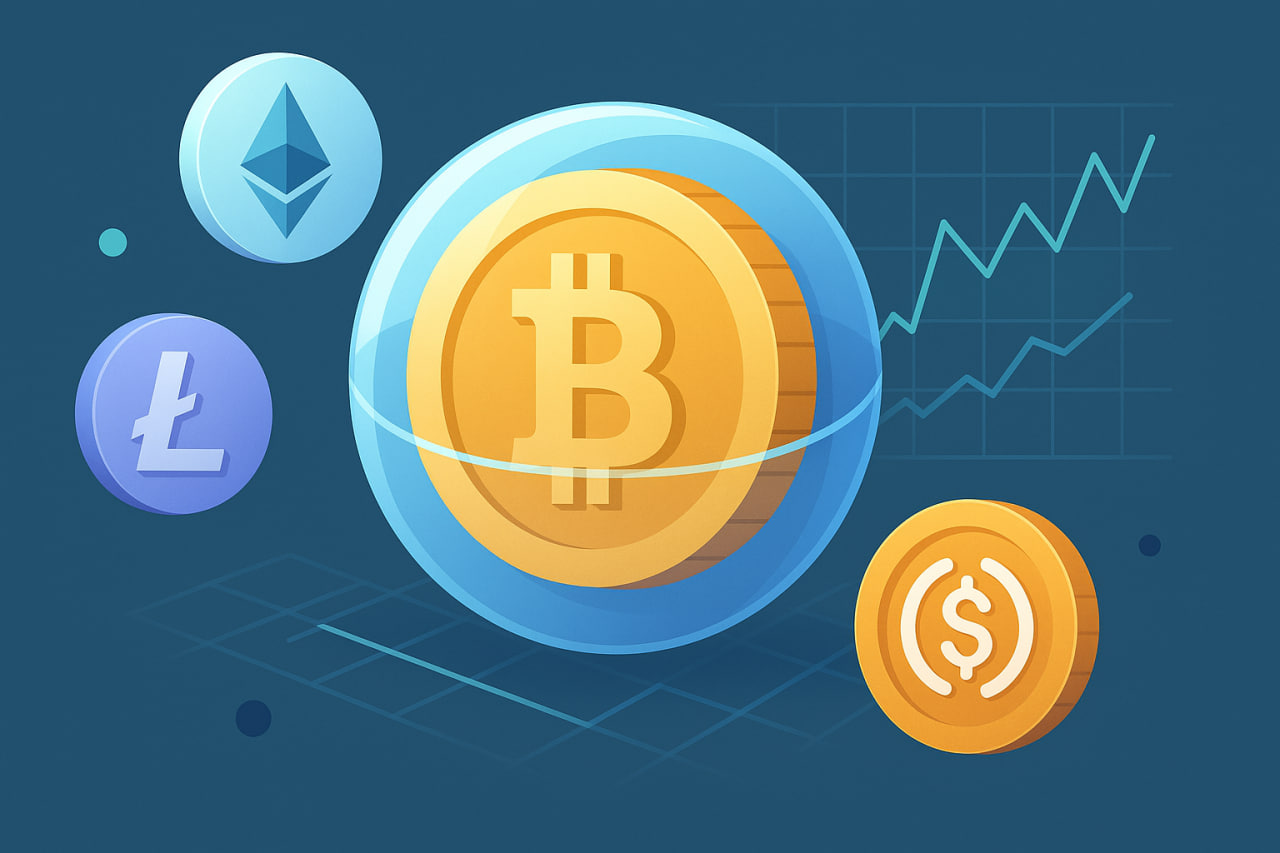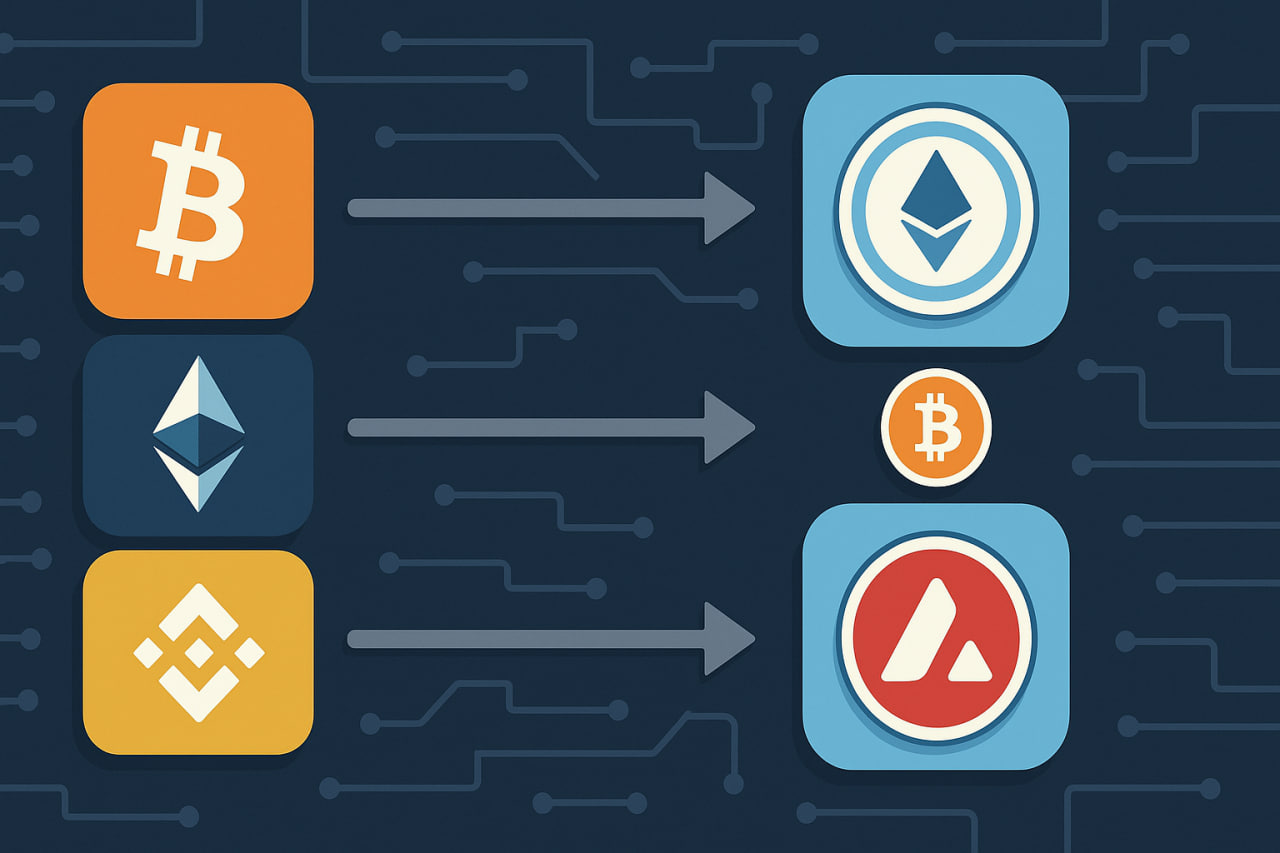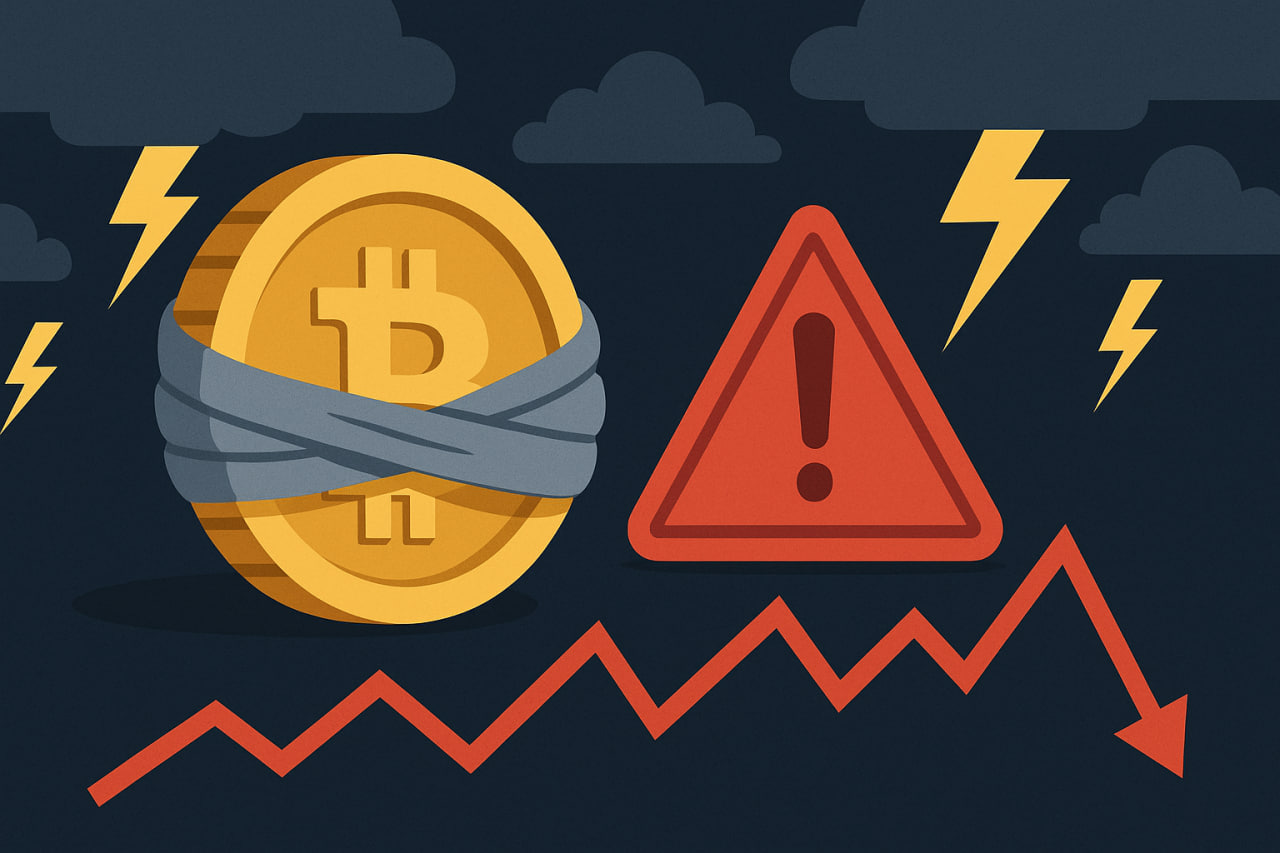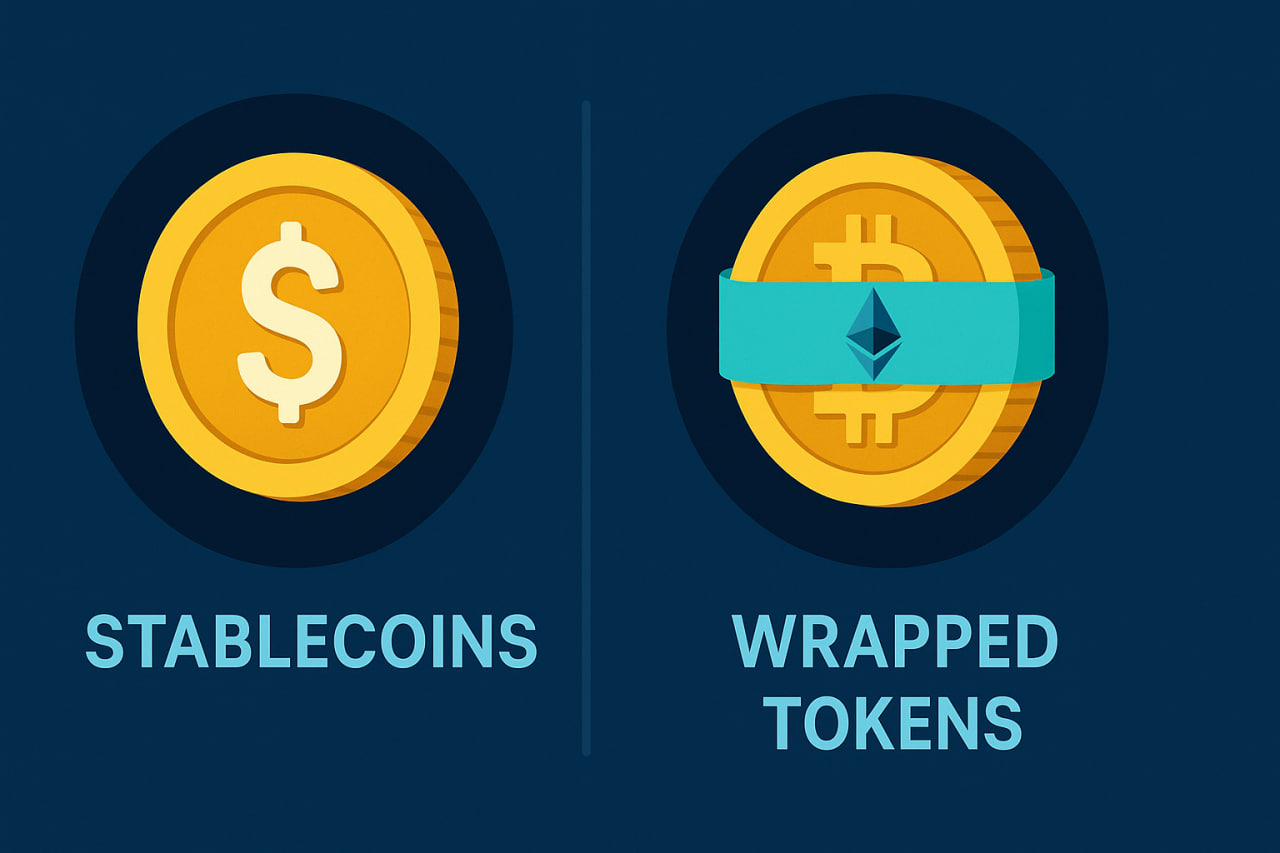What Are Wrapped Tokens in Crypto

Contents
- Introduction
- What Are Wrapped Tokens in Cryptocurrency
- How Wrapped Tokens Work
- Popular Examples of Wrapped Tokens
- Advantages of Wrapped Tokens
- Risks and Drawbacks of Wrapped Tokens
- Wrapped Tokens and DeFi
- Difference Between Stablecoins and Wrapped Tokens
- The Future of Wrapped Tokens and the Crypto Market
- Conclusion
Introduction
Wrapped tokens have become one of the key tools in the cryptocurrency ecosystem. They allow assets to move between different blockchains, ensuring compatibility and liquidity. Without this mechanism, the development of decentralised finance (DeFi) would be limited by the boundaries of individual networks.
What Are Wrapped Tokens in Cryptocurrency

Wrapped tokens are digital assets that represent a “packaged” version of another cryptocurrency. For example, Bitcoin can be locked on one network and represented as an equivalent on the Ethereum network. This approach solves the problem of blockchain interoperability.
How Wrapped Tokens Work
The functioning mechanism of wrapped tokens is built on two basic stages:
-
The original asset is locked in a smart contract or with a custodian.
-
On another network, a token is issued that fully matches the value and price of the original asset.
This ensures a 1-to-1 principle, allowing users to utilise the asset in another ecosystem without selling or exchanging it.
Popular Examples of Wrapped Tokens

The most common types of wrapped tokens have already become standards in DeFi:
-
Wrapped Bitcoin (WBTC) — the Bitcoin equivalent on the Ethereum network.
-
Wrapped Ethereum (WETH) — a version of Ether used for smart contract interactions.
-
Wrapped AVAX, Wrapped MATIC, and other analogues for multichain liquidity.
These assets demonstrate how one technology opens access to different ecosystems without the need for complex exchange operations.
Advantages of Wrapped Tokens
Wrapped tokens have several benefits that make them an important tool for investors and DeFi participants:
-
Cross-chain interaction between blockchains.
-
Increased liquidity by integrating assets into new ecosystems.
-
Participation in smart contracts and protocols is unavailable to “native” coins.
-
Expanded investment strategies and diversification opportunities.
Risks and Drawbacks of Wrapped Tokens

Despite their popularity, wrapped tokens carry certain risks.
Main risks include:
-
Dependence on custodians or bridge operators.
-
Potential hacks of smart contracts and infrastructure.
-
Centralisation contradicts the idea of decentralised assets.
Therefore, when using wrapped tokens, it is important to consider not only the benefits but also the limitations.
Wrapped Tokens and DeFi
In decentralised finance, wrapped tokens have become tools that provide flexibility and efficiency. They are used in scenarios such as:
-
Adding liquidity to pools for asset swaps.
-
Yield farming and staking rewards.
-
Collateral in lending protocols.
-
Trading on decentralised exchanges.
Thanks to them, DeFi has transformed into a multichain ecosystem with high levels of liquidity.
Difference Between Stablecoins and Wrapped Tokens

Although stablecoins and wrapped tokens may appear similar, their purposes differ.
| Feature | Stablecoins | Wrapped Tokens |
|---|---|---|
| Value Peg | To fiat currencies (USD, EUR) | To other cryptocurrencies |
| Main Purpose | Stability and representation of fiat with 1:1 backing | Cross-chain interaction |
| Examples | USDT, USDC, DAI | WBTC, WETH |
| Risks | Issuers and regulation | Custodians and bridges |
The functions of these token types differ, but both complement the digital asset infrastructure.
The Future of Wrapped Tokens and the Crypto Market
The future of wrapped tokens is linked to the development of cross-chain transaction solutions and the growth of tokenised assets. Expected trends include:
-
More reliable and decentralised bridges.
-
Broader use of wrapped tokens in the real economy.
-
Integration with new blockchain platforms.
-
A deeper role in global DeFi liquidity.
Conclusion
Wrapped tokens have become a vital link in shaping the modern crypto market. They solve the problem of blockchain interoperability, open new opportunities for DeFi, and expand investor strategies. At the same time, users must remember the risks and factor them into their decisions.